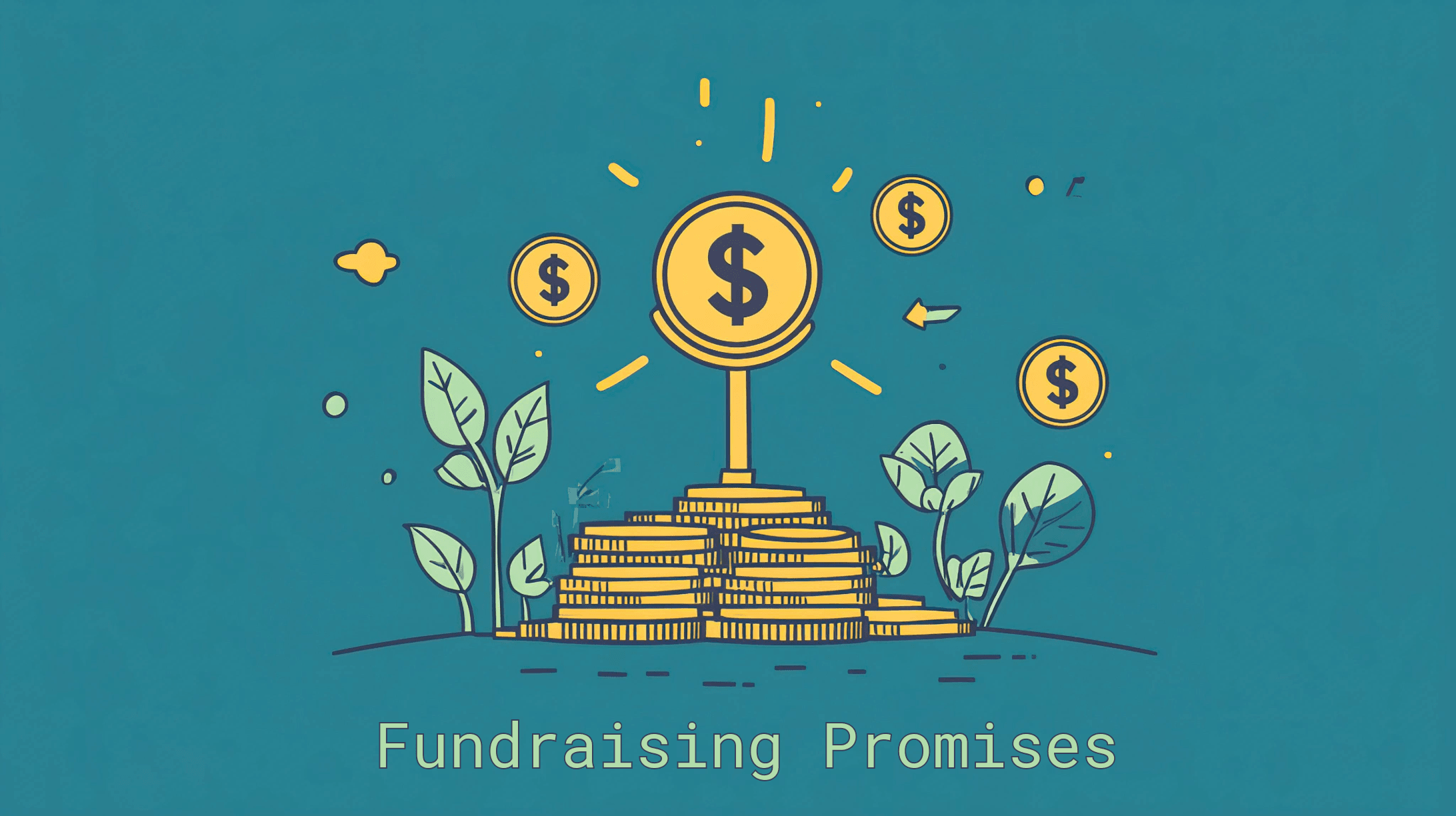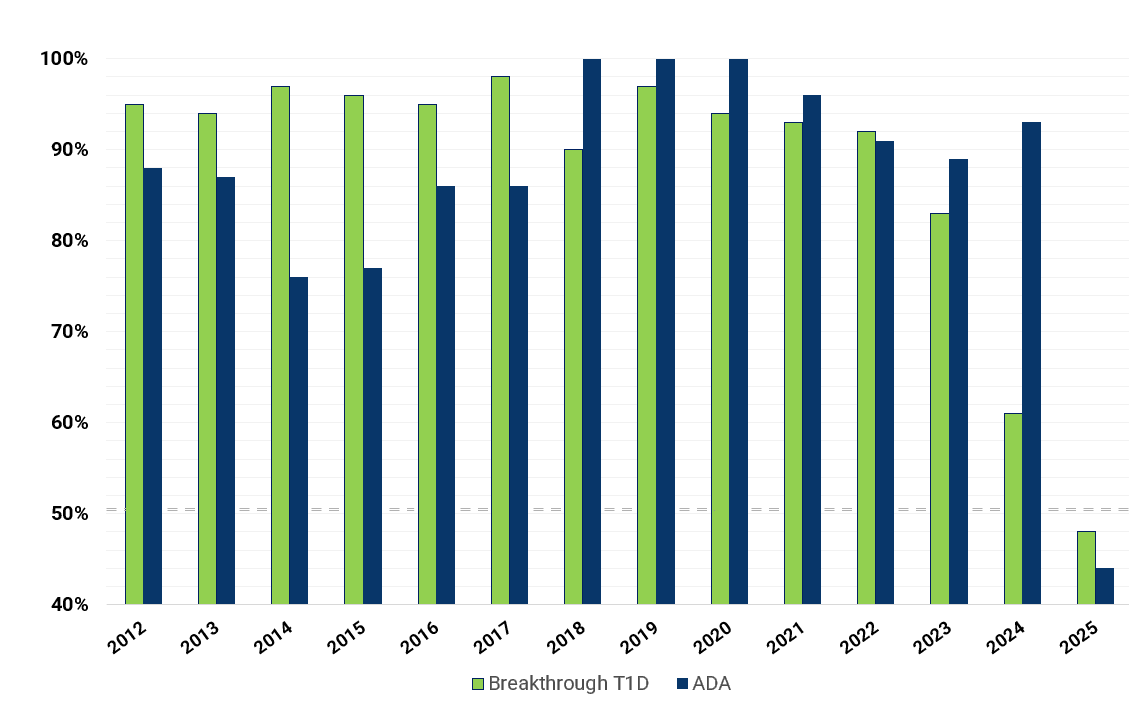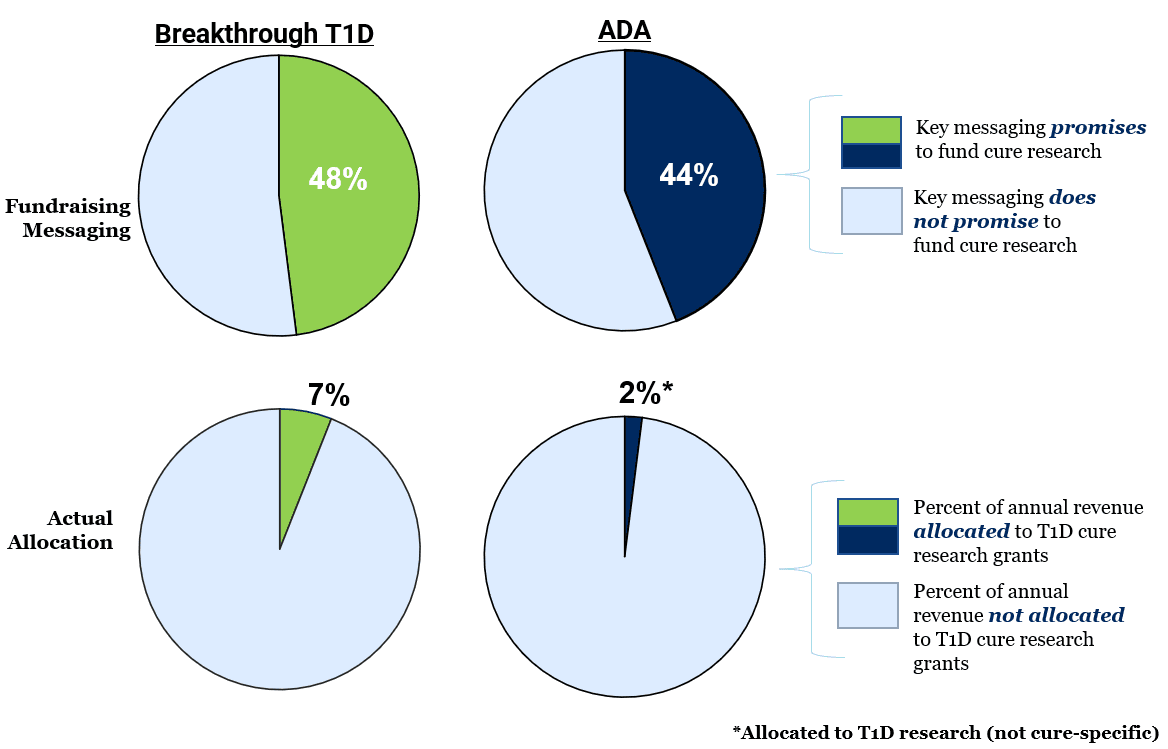
At a Glance
- For the first time in 14 years, the majority of events did not feature ‘cure’ as the primary promise.
- 48% of Breakthrough T1D’s event marketing and 44% of ADA’s event marketing used cure as the main fundraising promise.
- Non-cure-focused messaging places cure as one objective in a list of others like management, prevention, and advocacy.
- The actual amount of money used for cure research continues to be much less than the amount promised.
- 7% of Breakthrough T1D revenue went to cure-focused contracted grants; <2% of ADA revenue went to cure-focused research grants.
October 14, 2025
T1D community members generate hundreds of millions of dollars each year by hosting or participating in classic, annual events like galas and marathons, or creating local DIY and virtual events. For a chronic disease-focused nonprofit, there is no greater rallying cry to draw the fundraising community together than implying the proceeds will fund cure research.
This is the fourteenth annual report comparing fundraising messaging with actual cure funding. The focus of the report is on two of the loudest voices directing diabetes research: Breakthrough T1D (formerly JDRF) and the American Diabetes Association (ADA). In this report, we take a close look at how messaging has changed over time.
Analysis is based on a comprehensive review of both organizations’ 2025 US event calendars. Breakthrough T1D’s and ADA’s publicly available financial data from the most recent fiscal year ending in 2024 (FY24) were used to determine revenue and research grant spending.
Two Key Findings
First, the percentage of fundraising events that use cure as the primary promise has dropped below 50% for the first time since we began tracking the data (see chart A). In 2025, only 48% of Breakthrough T1D events and 44% of ADA events used cure-focused messaging.
The main objectives of most fundraising events were watered down into a long list of areas where cure was included, on equal footing, as one among many. This list included advocacy, education, management, prevention, delay, access to care, etc.
Given that 97% of community members reported a cure being the most important reason they gave to nonprofit events, this seems like a move in the wrong direction.
Chart A: Percentage of Events with Cure-Based Messaging (Historical)

Second, actual cure funding remains significantly lower than the amount suggested by event messaging in 2025. Only 7% of Breakthrough T1D revenue was used for cure-focused research (see chart B). Only 2% of ADA’s revenue was spent on any T1D-focused research, meaning the amount on cure-specific research is likely much less, though unspecified.
The lack of alignment between the amount of cure messaging and actual cure funding has been a consistent trend for many years. Ultimately, we would like to see this number go up in line with T1D donor priorities.
Chart B: Cure-Focused Messaging Compared to Actual Cure Funding

Breakthrough T1D: Wide-Ranging Message
- 282 events in 2025.
- 48% of events implied proceeds would fund a cure.
- $261 million in revenue in FY24—$106 million from fundraising proceeds.
- 7% ($17 million) of revenue went to contracted cure research; 33% went to ‘other’ T1D research
From 2012 to 2023, Breakthrough T1D maintained heavy cure-oriented messaging in 83-98% of events each year. Descriptions, logos, and images held ‘cure’ frontline and center, often using taglines like the well-known “Turn type 1 into type none” and “A world without T1D,” still seen in some events today.
In 2024, we saw a sharp decline in cure-focused messaging, from 83% to 61%. This trend has since expanded to more events, doubling down on the idea of improving lives on the way to cures, suggesting the focus is better management, advocacy, and generalized support. This year, less than half of all events used ‘cure’ as the call to action.
A prime example of this shift is the universal messaging in the annual Walk series, which accounts for most events each year (121 in 2025). The new phrasing, “Where every step drives research, advocacy, and support to improve lives until we find a cure,” suggests the funding focus is on life with T1D today, not creating a world without T1D tomorrow. This is interesting as the series first began as JDRF’s Walk to Cure Diabetes.
However, some events, like the Breakthrough T1D Ride, remain inherently cure-focused: “More than cycling, it’s a movement to cure type 1 diabetes (T1D).”
American Diabetes Association: Following Suit
- 36 events in 2025.
- 44% of events implied proceeds would fund a cure.
- $157 million in revenue in FY24—$12 million from fundraising proceeds.
- 2% ($3 million) of revenue went to T1D-specific research.
ADA is following Breakthrough T1D’s lead by generalizing event descriptions with cure messaging, dropping from 93% in 2024 to 44% this year. ADA holds two event series throughout the year. The Tour de Cure cycling event is inherently cure focused. But, the Step Out Walk series (formerly Step Out | Walk To Stop Diabetes) has changed its universal description: to cover a wide range: “This event increases awareness, connects communities, contributes to diabetes prevention and management, and supports the ADA’s vision of a life free of diabetes and all its burdens.” Advocacy, prevention, and management are prioritized while funding cures is an afterthought.
Despite the large reduction in cure-based communications, there is still a large discrepancy between what is implied versus actually funded.
To Cure or Not to Cure?
Since inception, JDCA has advocated that cure-based fundraising messaging go hand-in-hand with cure-based funding. If 80% of advertisements for walks, rides, and galas unite communities to participate under the shared banner of cure research, then around 80% of funds raised should go to cures.
On one hand, this shift could be attributed to our advocacy. For over a decade we have called attention to this discrepancy. Breakthrough T1D and ADA seem to have paid attention and moved to more realistic advertising. It would be unfortunate if this were used to justify lower research grants.
On the other hand, the T1D community would prefer to see a shift in the other direction: Instead of cure-focused messaging plummeting, cure research funding should rise to meet expectations. Alternatively, these organizations could create specific, dedicated cure events where marketing can be taken at face value, giving donors an outlet to give where all proceeds truly benefit cure research.
The steep decline in fundraising events that use solely cure messaging is a trend JDCA expects to see continue. Time will tell if this alienates participants who are driven solely by the now foregone cure promise.
